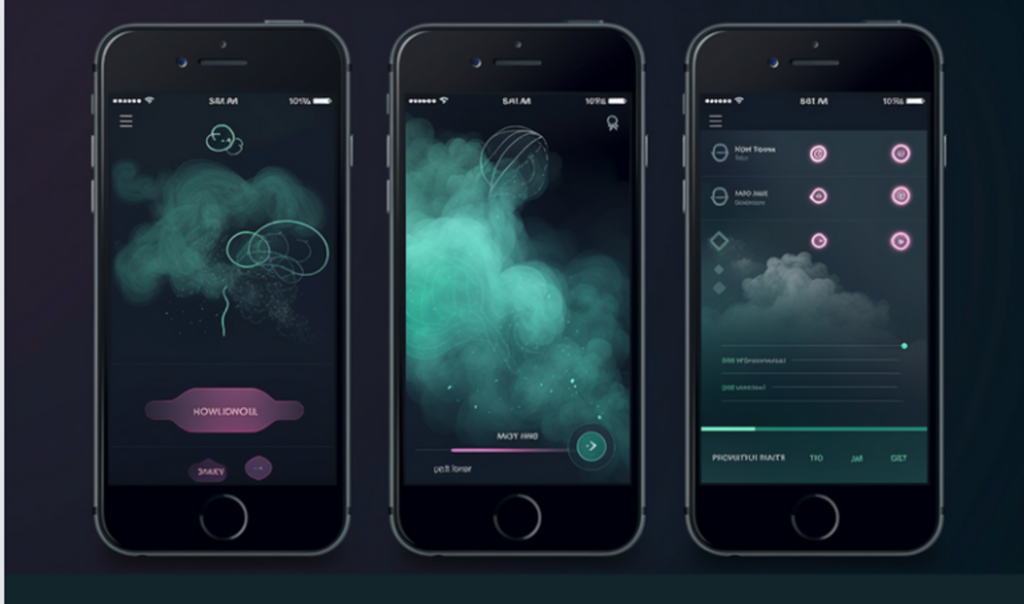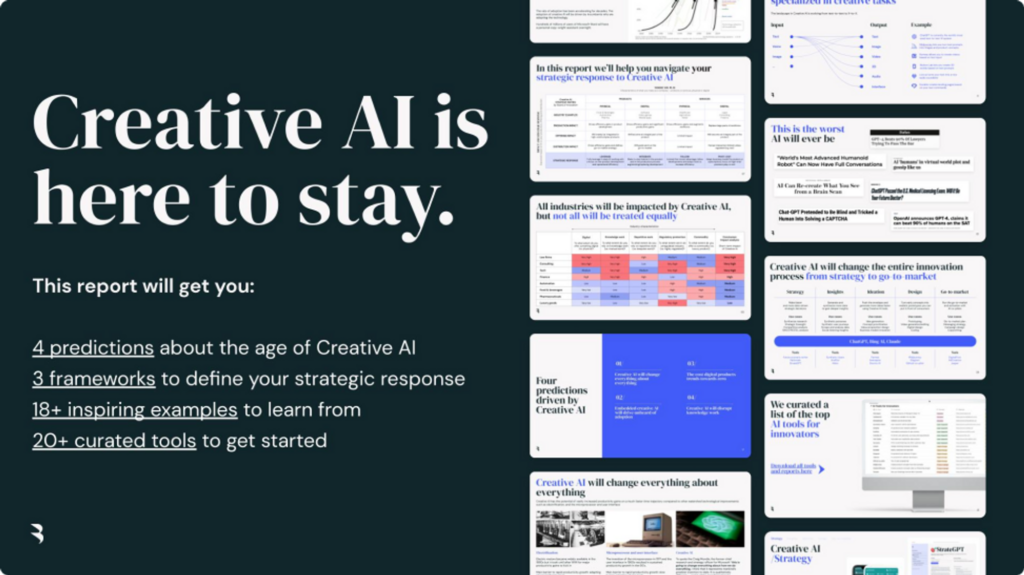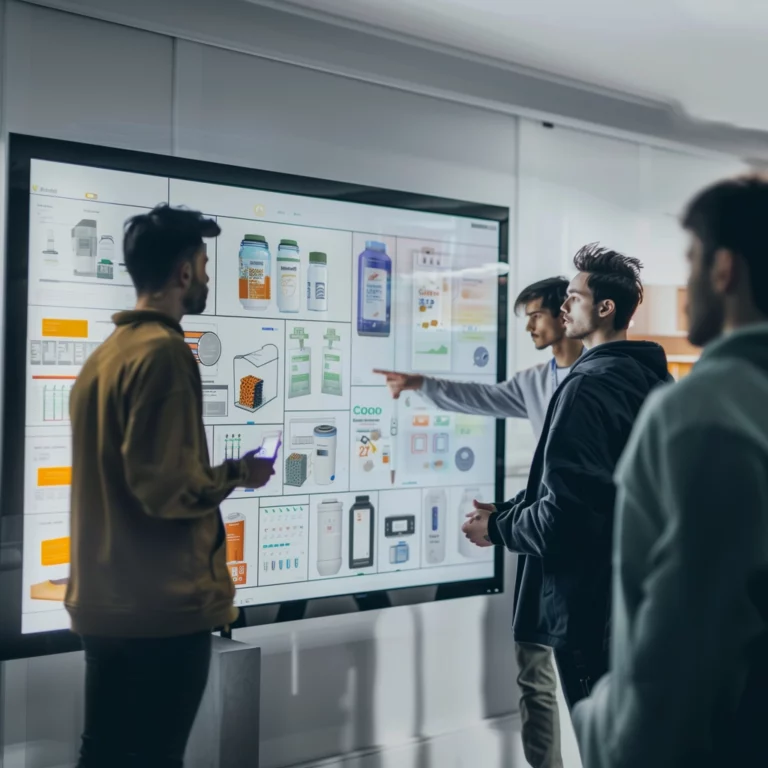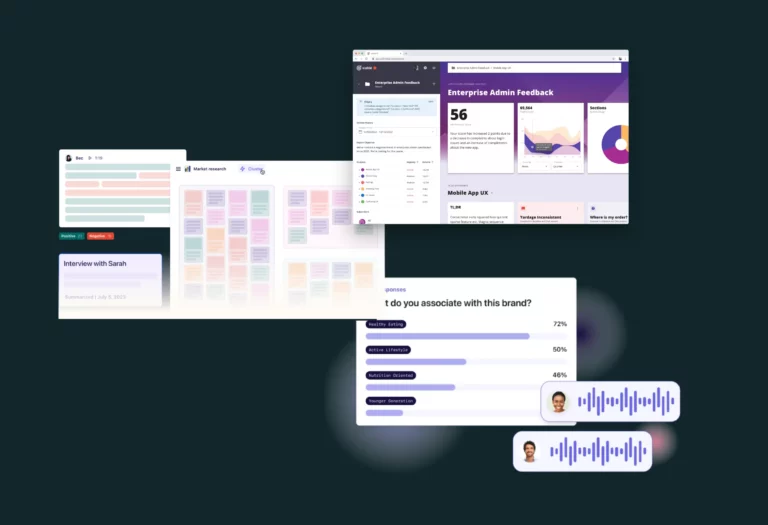We define inclusive innovation as the practice of creating products and services that are accessible and usable by as many people as possible – regardless of their age, gender, ability, or background.
AI is usually seen as a barrier to inclusion, due to biases in its development.
But we’ve already found several ways to use AI to create innovations that are more inclusive.
AI tools can be used to improve inclusive innovation in two ways:
1) How you innovate: Making it easier and cheaper to use inclusive innovation methods
2) What you create: Enabling more inclusive products and services that lead to more equitable outcomes
Here are 10 use cases based on a hypothetical new service designed to help make it easier to quit smoking…

The Product: BreatheEasy:
Introducing BreatheEasy – a new digital health solution designed to empower individuals on their journey towards a smoke-free life.
BreatheEasy offers a suite of tools, AI-enabled coaching, and community advice from others with similar goals – all within a user-friendly platform.
Use case 1 - Automated multi-language user testing:
Unlock the power of AI in a unique sprint format. Leverage the latest AI tools to generate new ideas, get real-time feedback, and curate new concepts to move forward with.
Use case 2 - Predictive feedback to expand user testing capabilities:
Use case 3 - Debiasing design research:
While tools such as ChatGPT are built on biased data – which is acknowledged by OpenAI’s founder – they can be used (if instructed correctly by the user on specifically what to look for, and if outputs are assessed by the user) to eliminate bias.
During design research and product testing, this approach could be used to identify this in interview guides, and also to predict features that will be most important to test with under-represented users – and do it all rapidly, for free.
Use case 4 - AI-powered product and service testing:
Using AI-powered research tools such as Remesh or Groupsolver, product concepts and prototypes can be simultaneously tested with real people from a wide variety of user groups simultaneously – including under-represented user groups, not just a narrow target audience.
By using AI-powered co-creation methods, teams can identify specific improvements that improve inclusion and get real-time feedback on them.
Use case 5 - Automated bias testing:
During development, AI tools can be prompted to identify and minimize biases in BreatheEasy’s design, content, marketing and even its underlying algorithms – using tools such as Google’s What If, Amazon’s Sagemaker Clarify or AI Fairness 360.
Using these tools can help ensure that the BreatheEasy platform caters to a diverse range of users without perpetuating stereotypes or discrimination – at every stage of the solution being created.
Use case 6 - Natural Language Processing for accessibility:
AI-powered Natural Language Processing (NLP) tools can simplify the language used in BreatheEasy’s educational materials, instructions, and notifications – making them more accessible for users with diverse cognitive abilities or diverse cultural backgrounds.
Tools such as Kudo and Google’s AutoML Translation can also provide real-time translations for various languages and cultural nuances to cater to a diverse and multicultural audience.
Use case 7 - Automatic voice interface:
AI-driven speech recognition and synthesis technologies can enable BreatheEasy users to interact with the app using voice commands and benefit from text-to-speech features, making the platform more accessible for visually impaired or motor-limited users – even offering support via telephone rather than a mobile app.
With this approach, BreatheEasy could provide support for more people – maybe even beyond the app.
Use case 8 - Automated emotion-aware support:
AI-driven emotion recognition technologies (such as Hume) can detect users’ emotional states through facial expressions or tone of voice and adapt BreatheEasy’s content and smoking cessation support strategies accordingly, ensuring a more inclusive and empathetic experience.
Using this approach, more BreatheEasy users will feel like somebody has their back – more of the time.
Use case 9: Adaptive user interfaces:
AI algorithms can analyze user data and preferences to create personalized interfaces – accommodating users with different learning styles, cognitive abilities, and cultural backgrounds, and ensuring a more inclusive experience.
With an interface that adapts to each individual, BreatheEasy users are more likely to stay engaged – whatever their background, ability, age or gender.
Use case 10: Continous accessibility studies:
AI tools can automatically and continuously evaluate the BreatheEasy’s app and website to identify and address accessibility issues, ensuring that users with varying abilities can easily interact with the platform – and keep audits automatically up to date with changing standards, regulations and best practices.
Using this approach, BreatheEasy will stay up to date with changing accessibility standards and potential inclusion barriers can be predicted and avoided.



